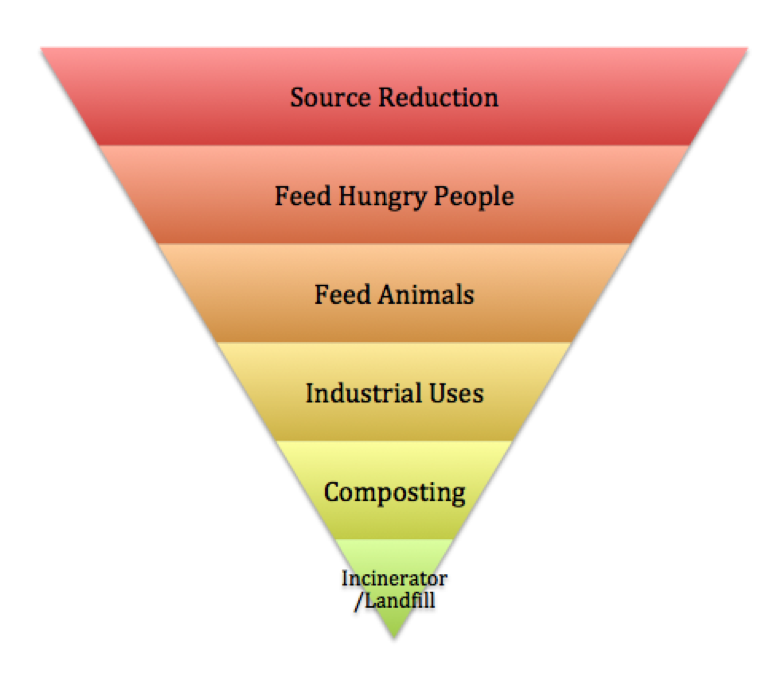Food Recovery, Repurposing, and Donation
Better Uses for Surplus and Unsalable Food
Just as there are many sources and causes of food waste, there are varied types of food recovery. The EPA has developed a hierarchy of ways to address food waste that identifies waste reduction and recovery of edible matter for donation to the hungry as priority activities.
The most effective way to avoid the costs associated with food waste is prevention. For restaurants and grocers, significant reductions in food waste can be achieved through careful inventory management and stock rotation, clever menu planning, offering appropriately sized portions, properly storing food, and offering waste-reduction training to employees. At the consumer level, waste can be minimized by shopping mindfully, planning meals in advance, consuming leftovers, making sure that perishable food remains visible in the refrigerator, resisting the urge to eat out or order in when there is food to consume at home, avoiding confusion regarding use-by, sell-by, and expiration dates, and being educated about proper food storage and consumption timing.
 Because it is not practical to entirely eliminate food waste, including waste of some
edible material, the next best way to handle excess food is to identify that which
is wholesome and suitable for donation and get it into the hands of organizations
that provide food to those in need. For information on developing and implementing
a food recovery plan, see our Resources section and reference the Comprehensive Resource for Food Recovery Programs collaboratively developed by the United States Department of Agriculture and the
Food and Drug Administration. These guidelines, which are incorporated into the FDA’s 2017 Food Code, serve as a very helpful reference and issue-spotter for businesses developing a
food recovery program and provides valuable insight regarding how to train workers
involved in food recovery, how to promote safety, how to properly select, store, and
transport recovered food for donation, and how to develop mutually beneficial relationships
between food businesses and nonprofits.
Because it is not practical to entirely eliminate food waste, including waste of some
edible material, the next best way to handle excess food is to identify that which
is wholesome and suitable for donation and get it into the hands of organizations
that provide food to those in need. For information on developing and implementing
a food recovery plan, see our Resources section and reference the Comprehensive Resource for Food Recovery Programs collaboratively developed by the United States Department of Agriculture and the
Food and Drug Administration. These guidelines, which are incorporated into the FDA’s 2017 Food Code, serve as a very helpful reference and issue-spotter for businesses developing a
food recovery program and provides valuable insight regarding how to train workers
involved in food recovery, how to promote safety, how to properly select, store, and
transport recovered food for donation, and how to develop mutually beneficial relationships
between food businesses and nonprofits.
Food that is no longer suitable for human consumption, including plate waste, table scraps, unconsumed food from buffets, and trimmings from fruits and vegetables, may be recovered for animal feed and composting. Livestock producers are often interested in collecting food scraps to supplement the diets of their animals, provided that the scraps can be separated from other waste and are free of materials unsuitable for animal consumption (i.e., meat from like animals, coffee grounds, or extremely high sodium foods). Such scraps must also be kept fresh until they can be delivered in usable quantities and at appropriate intervals.
Composting organic waste either on-site or through private or municipal services can also drastically reduce waste. Produce trimmings, spoiled fruits and vegetables, unfit frozen food, excess batter and bakery products, coffee grounds, tea leaves, filters and bags, egg shells, paper, cartons, floral waste, and plant trimmings are all suitable for composting. Dairy, seafood, and meat may also be composted, though including such items in a composting program may generate additional concerns about vermin control.
By directing appropriate waste back into food production, the resources that went into the cultivation of food that did not get eaten are not irretrievably consumed.